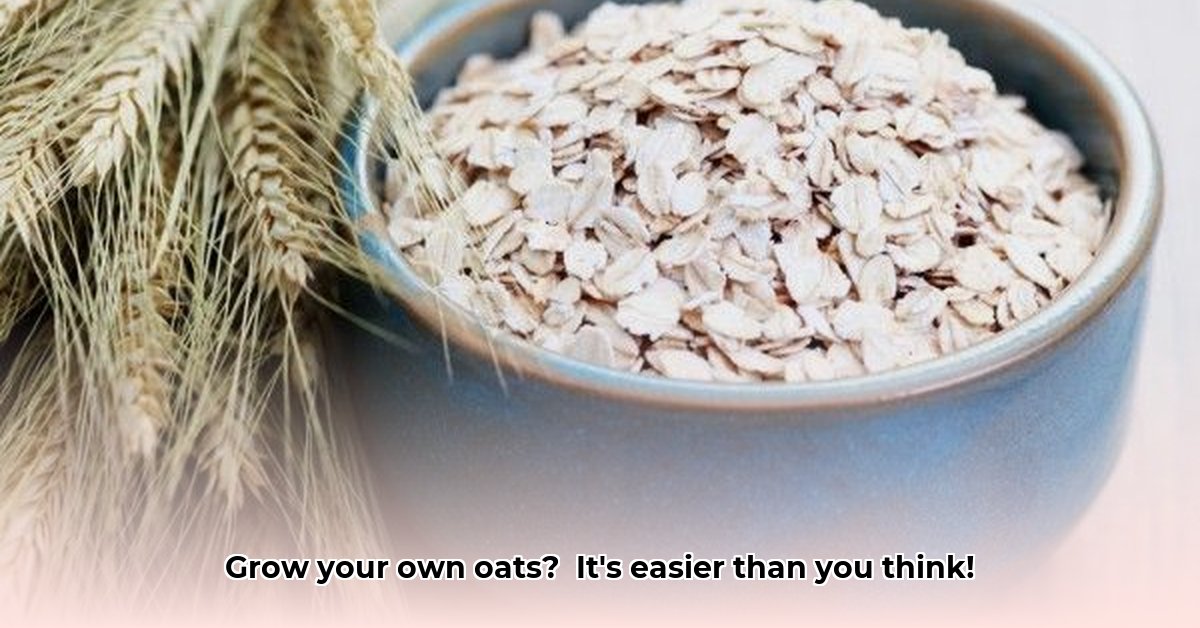
Finding the right oats for your farm involves a delicate balance: quality, cost, and sustainable practices. Tractor Supply offers a convenient option, but integrating their offerings into a truly sustainable farming system requires careful consideration. For more on Tractor Supply equipment, check out Tractor Supply Tools. This article explores how to navigate this challenge, focusing on responsible oat production and maximizing yield while minimizing environmental impact.
Oats at Tractor Supply: A Sustainable Approach
Tractor Supply provides a readily available source of oat seeds for many farmers, offering convenience and often competitive pricing. However, relying solely on large retailers raises questions about sustainability. The long-distance transportation of these oats contributes to a larger carbon footprint compared to locally sourced seeds. The key lies in using Tractor Supply as a supplement to, not a replacement for, locally sourced oats.
Sustainable Oat Farming: Beyond the Source
Sustainable oat farming goes beyond the origin of your seeds. Several key factors contribute to a truly environmentally responsible approach:
Sourcing Considerations
- Packaging: Opt for minimal, recyclable packaging whenever possible to reduce waste. The less packaging, the lower the environmental impact.
- Transportation: Prioritize locally sourced oats to minimize transportation's carbon footprint. Shorter distances mean less fuel consumption and fewer greenhouse gas emissions. Consider the "food miles" – a measure of the distance food travels from farm to table.
- Farming Practices: Investigate the farming practices employed by your oat supplier. Inquire about the use of organic methods, fertilizers, and pest control strategies. Transparency is crucial.
- Oat Variety: Selecting oat varieties suited to your local climate and soil conditions is essential. Adapting to your specific environment reduces the need for excessive water, fertilizer, and pesticides.
Integrating Tractor Supply Oats into a Sustainable Strategy
Even when considering Tractor Supply as a supplementary source, these steps ensure a greener approach:
- Prioritize Local: Always prioritize locally grown oats whenever feasible. Support your local farmers and reduce your environmental impact.
- Supplement, Don't Replace: Use Tractor Supply oats only to fill gaps in your local supply, not as your primary source.
- Demand Transparency: Actively engage with Tractor Supply and their suppliers, requesting information about their sustainability practices. Your inquiries can encourage positive change.
- Offset Your Impact: Implement other sustainable farming practices to compensate for the environmental impact of sourcing from a large retailer. Examples include employing carbon sequestration methods or optimizing irrigation techniques.
A Balanced Perspective: Weighing the Pros and Cons
Using oats from Tractor Supply presents both benefits and drawbacks:
| Advantages | Disadvantages |
|---|---|
| Convenience and readily available supply | Potentially higher carbon footprint from transport |
| Competitive pricing | May lack transparency regarding farming practices |
| Wide selection of oat types | Might not always prioritize organic or sustainable options |
The Future of Sustainable Oat Farming: Collaboration is Key
The future of sustainable oat farming depends on a collaborative effort involving farmers, consumers, and policymakers. By prioritizing local sourcing, demanding transparency from suppliers, and implementing environmentally sound practices, we can create a more resilient and sustainable food system. This includes encouraging research on oat varieties that thrive in various conditions and have higher yields with less environmental impact.
Implementing Sustainable Oat Farming Practices for Increased Yield
Moving beyond sourcing, let's examine specific farming techniques to boost yield sustainably. Regenerative organic practices offer a pathway to healthier soil, higher yields, and enhanced environmental resilience.
Regenerative Organic Practices: Building Soil Health
Regenerative organic oat farming focuses on building soil health, creating a robust foundation for increased yields and long-term farm resilience. This approach prioritizes improving soil health through enhanced biodiversity, carbon sequestration, and improved water retention.
Actionable Steps for Sustainable Oat Production
- Soil Testing: Start with a thorough soil test to identify nutrient deficiencies. This guides targeted fertilization strategies, reducing reliance on excessive synthetic fertilizers that harm soil health.
- Cover Cropping: Integrate cover crops like clover or rye between oat harvests to prevent erosion, improve soil structure, and add organic matter.
- No-Till Farming: Minimize soil disturbance by avoiding plowing, protecting beneficial soil microorganisms and reducing erosion.
- Crop Rotation: Rotate oats with other crops to diversity your fields and break pest and disease cycles, improving soil nutrient levels.
- Integrated Pest Management: Employ natural pest control methods to reduce dependence on harmful pesticides and protect beneficial insects.
- Water Management: Utilize efficient irrigation techniques, like drip irrigation, to reduce water waste.
- Continuous Monitoring: Regularly monitor soil and crop health, adjusting farming practices based on observations. Sustainable farming requires constant adaptation and learning.
Economic Considerations: The Long-Term View
While investing in sustainable practices may initially increase costs, the long-term benefits outweigh the initial investment. Increased yields, the potential to sell premium organic oats, and improved soil health lead to greater economic viability and resilience.
Challenges and Opportunities
Scaling up regenerative organic practices requires addressing challenges such as limited knowledge dissemination, resource access, and potentially lower initial yields. Government incentives, strong market demand for organic products, and robust farmer support networks are essential for wider adoption. Further research into economically viable and scalable methods is crucial.